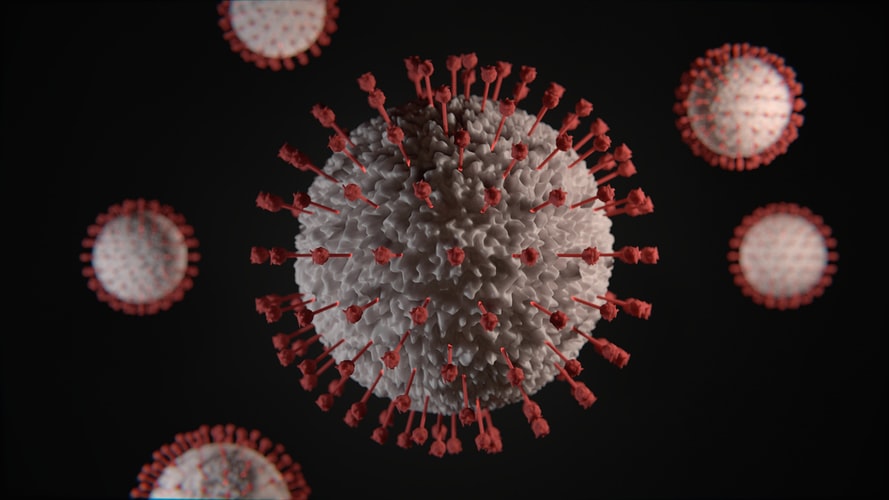
How is the COVID19 Rapid Test PCR Done?
Rapid COVID tests have been crucial for providing quick, affordable testing to be implemented on a large scale. Before rapid tests were available, testing required long waits both at the testing center and to receive your results. This made some people less likely to be tested at all, not to mention the potential for samples to become lost in transit to the laboratory. Rapid testing changed that, and now we can even test from the comfort of our own homes.
Most often when you hear someone mention a rapid COVID test, they’re talking about the rapid antigen test. This was the first rapid test. Antigen tests look for evidence of the virus in the form of a specific protein, and have a lower sensitivity in accuracy than COVID-19 PCR tests. Standard PCR testing, while more accurate, requires laboratory testing, and providing results to patients can require several days.
That is, until the development of the rapid PCR test, the new “gold standard” of COVID-19 testing which can provide highly accurate results within about twenty minutes at the point-of-care.
What is a rapid COVID test?
Standard antigen rapid tests can be conducted almost anywhere—at home, a school nurse’s office, and even in airports—which makes them extremely beneficial to test a large number of people. Plus, they’re affordable and easy to administer. A quick nasal swab or saliva sample, a paper strip test, and results are ready as quickly as fifteen minutes.
And for a while, only antigen tests could be done as rapid tests.
The two primary types of COVID tests—antigen and molecular (RT-PCR)—differ in what evidence they look for that indicates infection. Antigen tests were able to be developed into rapid tests because the paper strip tests could identify surface-level proteins from the virus quickly. But this indicated a high viral load, and was better at identifying infectiousness rather than infection. Many false negatives followed; but the school of thought behind widespread rapid tests was that enough highly infectious people could be identified to lower the spread.
On the opposite side of the spectrum, RT-PCR (PCR) identifies genetic material that indicates infection—which typically requires detailed time-intensive laboratory analysis. A PCR machine can replicate in cycles the specific COVID genetic material. After multiple cycles of replication, enough genetic material is evidenced to provide a positive result. With RT-PCR test accuracy being the highest, the goal of researchers was to develop a PCR test that could provide the same accuracy at point-of-care, and quickly.
What is the turnaround time for rapid COVID19 testing?
Developments in testing have provided molecular (PCR) tests that can provide results as fast as twenty minutes. These are referred to as rapid point-of-care molecular tests, and an example is Abbott’s ID NOW.
Antigen testing can be done without the assistance of a healthcare provider, or laboratory analysis, conducted similarly with a nasal swab or, in some cases, saliva samples. The risk with these quick, self-administered tests is accuracy: those with lower viral loads are less likely to show as positive, even when infected. But developments in rapid PCR tests are quickly becoming more available and some can be completed outside of a healthcare facility.
How long does a rapid COVID test take?
A typical antigen rapid COVID test can provide results as fast as fifteen minutes. These can be administered at home or at a clinic. Most typical molecular (PCR) tests can produce results at point-of-care, or at a clinic, within a few hours if not faster. The PCR rapid tests have been reported to be completed in about thirty minutes.
Getting correct results can take far longer when circumstances are more complicated. When a rapid antigen test shows a negative result for someone showing symptoms, for example, it is recommended they also submit a sample for a full PCR laboratory test to verify the results, which takes far longer.
How accurate is the rapid COVID test?
Antigen rapid tests have a higher likelihood of false negatives due to requiring a higher viral load for detection. But with the far more accurate PCR tests becoming more widely used than rapid tests, accuracy improves as well, with fewer false negative tests. But accuracy is somewhat circumstantial, for example:
- For people with symptoms of COVID-19, the tests correctly gave a positive result an average of 72 percent of the time.
- People without COVID-19 symptoms correctly tested positive in 58.1 percent of rapid tests.
- Rapid tests more accurately provided a positive COVID-19 result when administered during the first week of symptoms, with an average of 78.3 percent of cases during the first week.
- In the second week, the average dropped to 51 percent.
These types of caveats demonstrate how important it is that the complexities of testing be taken into account. COVID testing remains one of the best ways to combat COVID 19, and researching its methodologies remains important for public health.
BioCollections Worldwide understands the importance of testing, and we consider continued COVID testing developments and practice of utmost importance. We demand the best when dealing with the severity of COVID, and provide straightforward, affordable, fast testing.
With over twenty years’ experience, over six locations in the US—and more affiliates and subsidiaries internationally—we look to provide exceptional testing wherever needed. Want to learn how BioCollections works to provide the best in COVID-19 testing and research? Contact us today to learn more about how they can help.
